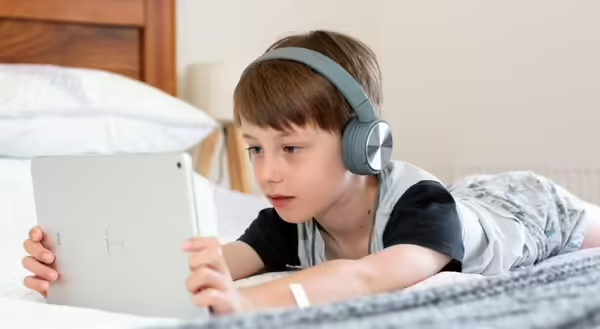
Screens seem to be everywhere in the form of phones, laptops, tablets, and even watches, so we have to think about how we function in an environment with screens constantly being utilized in our lives. According to the CDC website, children ages 8-10 have a screen usage time of around 6 hours. Youths ages 11-14 spend around 9 hours a day in front of a screen. Youths ages 15-18 spend around 7.5 hours a day in front of a screen. We have to ask ourselves: what effect excessive does screen usage have on us?
It is in our boredom we think of creative and innovative ideas. Therefore, if we replace free time with being online, our ability to use our imagination and express ourselves can be negatively impacted. Another effect that excessive screen time can have on us is our inability to get quality sleep. Staying up to view our screens gives us less time to get the deep sleep that sets us up for the next day. Our ability to focus is also stunted when it comes to viewing screens constantly. This stops us from doing our best in classes or work and our future work and school performances can then be jeopardized if this pattern continues.
One cannot talk about screen time without talking about social media. Especially within the younger generation, social media presence seems to be essential when being in touch with friends. However social media can lead to a handful of issues that affect people's mental health such as anxiety, depression, self-image issues, etc.
So, what are some ways to reduce screen time?
- Find alternative hobbies you actually enjoy to pass the time
- Set screen time limits on phones apps in your settings
- Create family rules restricting the use of devices after certain times of the day or during mealtimes
- Avoid viewing your phone right before bed and even place your phone in a different room from where you are sleeping
If you want more information about screen usage to read or share with others, check the following websites:
- Valleywise Health Blog
- Mayo Clinic Health System
- New York Presbyterian Health Matters
- UW Medicine Right as Rain
- University of Nevada-Reno.
Sources:
- Tips to Reduce Screen Time. National Heart, Lung, and Blood Institute
- Screen Time and the Brain. National Heart, Lung, and Blood Institute
Author: Sharon Kim, Interdisciplinary Health Sciences student, University of Illinois and Illinois Extension intern.